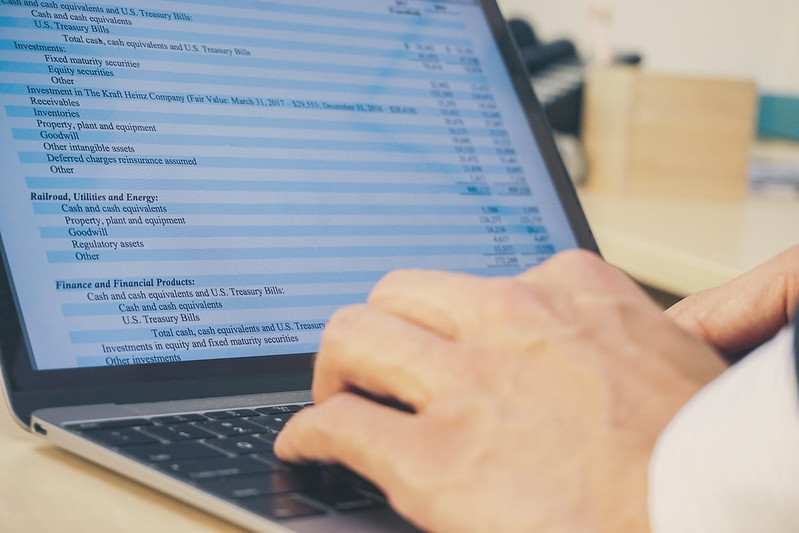Recently, I found myself trying to quantify the value of SteveBizBlog to a potential sponsor. Sure, I could list out the financial investments we made—hardware, software, and subscriptions—but that wouldn’t capture what truly makes it valuable. The real value lies in the countless entrepreneurs who have learned game-changing techniques or avoided costly mistakes because of what they learned. This conversation made me realize that this isn’t just a challenge for SteveBizBlog; it’s a lesson for all small business owners. Much of what makes a business successful is intangible, but traditional accounting methods fail to capture these crucial elements.
Traditional financial statements provide a structured way to assess a business, detailing tangible assets, liabilities, revenue, and expenses. However, they fail to account for the deeper value a business creates—such as its knowledge, the relationships built, and the culture fostered. These intangible assets don’t appear in accounting records, yet they often define a company’s true value and long-term success just as much as, if not more than, its financial figures.
SteveBizBlog is a perfect example. While I can quantify the investments in technology and resources, what remains immeasurable is its broader impact—the invisible benefits that shape the business landscape in ways that financial statements simply don’t capture.
The Unseen Effects of Business Influence
This concept reminds me of the unseen effects in the Broken Window Theory, an idea often discussed in economics and public policy. In short, the theory argues that when you only focus on what is visible—such as all the economic activity resulting from repairing a broken window—you ignore the unseen consequences, like the productive use the owner could have made of their money elsewhere. The same applies to businesses: traditional financial statements show only the measurable aspects of a company, while the deeper, long-term impact remains hidden.
Recently, I read Red Helicopter by James Rhee, which explores the concept of goodwill—an asset that doesn’t appear on a company balance sheet until the business is sold. Reflecting on this, I recalled selling my first business. Initially, I assumed the buyer, Interleaf, was focused solely on my financials. However, when I reviewed the final sales transaction, I realized that a significant portion of the sale price was attributed to an off-balance sheet asset called goodwill. It became clear that the buyer, a public company, wasn’t just interested in my numbers—they were buying our internal processes, brand reputation, and customer and vendor relationships.
Rhee, who successfully turned around Ashley Stewart, understood this well. He recognized that Ashley Stewart’s true value wasn’t just in its financials but also in its people, culture, and community impact. Looking back on my Interleaf experience, I wonder if I could have leveraged our intangible assets even more during the sale. By the time I sold my second business years later, I had a much deeper understanding of goodwill, which helped me achieve a significantly higher sale price. Goodwill is a real and powerful force that accountants only officially recognize at the time of a sale, when they have to balance the books, but one that plays a crucial role in a company’s true worth.
What Goodwill Really Represents
Goodwill is the accumulated value of everything that makes a business special beyond its financial performance. It’s the relationships with customers, the dedication of employees, the quality of service, and the brand reputation. But how do you apply value to things such as:
- The quality of customer reviews and the trust they represent?
- The efficiency of internal processes and infrastructure?
- The strengths of a company’s culture and the intrinsic motivation of its employees?
- The ripple effect of a recommendation from a satisfied customer?
The Financial Lens vs. the True Value of a Business
What I have discovered is that most lenders, financial institutions, and investors make decisions based primarily on tangible assets and measurable revenue streams. They don’t factor in goodwill, even though it often represents a substantial portion of a business’s real value. This disconnect creates a challenge for businesses that thrive on long-term relationships, customer satisfaction, and a strong company culture and brand.
For example, SteveBizBlog is not profitable in the traditional sense. If a lender looked at its financials, they might conclude it’s not a viable business. However, the goodwill it has generated in the entrepreneurial ecosystems is priceless. Many entrepreneurs have gained insights that have prevented costly mistakes. Business owners have discovered strategies that ultimately led to exponential growth. None of this can be reflected in the company’s financial reports, yet it is the true impact of the business.
Communicating and Demonstrating Goodwill
So, the big question is: How can a business convey the value of its goodwill to lenders, partners, investors, or sponsors? While goodwill may be intangible, there are practical ways to make it visible and credible to those evaluating the business.
- Highlight Testimonials and Case Studies – Show the real-world outcomes of your work through client testimonials, success stories, and case studies that demonstrate the ripple effect of your impact.
- Track Engagement and Outcomes – While traditional metrics may not capture goodwill, alternative indicators like audience engagement, repeat customer rates, mentorship outcomes, or community growth can help illustrate it.
- Document Internal Systems and Culture – Presenting well-defined internal processes, team retention stats, and culture-building initiatives can give partners confidence in the strength of your operation.
- Curate Your Online Reputation – Positive reviews, media mentions, and social proof all contribute to the perceived value of your business. Make these visible and accessible to external stakeholders.
- Communicate Your Mission and Values Clearly – Aligning your business with a strong, purpose-driven narrative helps partners and investors understand the long-term value your company creates beyond the numbers.
Monetizing and Operationalizing Goodwill
Another question is: How can a business monetize its goodwill? How can it be leveraged as a tangible asset?
- Building a Community-Driven Model – Businesses that generate goodwill can create membership-based communities, exclusive content, or premium networking opportunities where the impact of goodwill becomes a monetizable asset.
- Brand Partnerships and Sponsorships – Companies that recognize the goodwill a business has built may be willing to sponsor content, collaborate on projects, or pay for access to its audience.
- Premium Consulting & Advisory Services – The experience and insights that have built a business’s goodwill can be repackaged as consulting services, mentorship programs, or workshops.
- Licensing & Productization – Turning intangible assets like frameworks, methodologies, or strategies into digital products, courses, or books is another way to extract monetary value from goodwill.
The Real Value of a Business
At the end of the day, a business is so much more than just its financials. It is a living entity shaped by the people it employs and serves, the relationships it fosters in the community, and the unseen impacts it creates. Financial statements alone will never capture the full extent of a company’s value or reflect the ripple effects it has in the world.
Whether you are running a blog, a service business, or a multinational corporation, the challenge is to recognize and leverage the true value of your business beyond the numbers. While goodwill may not appear on financial statements until the moment of sale, it is present in every interaction, every satisfied customer, and every life you touch along the way.
So, the next time you try to explain the value of your business, look beyond the numbers. The real measure of a company’s success might be something that can never be neatly recorded on a balance sheet—but it’s the most valuable asset of all.
Can you describe the hidden value of your business beyond the numbers?












